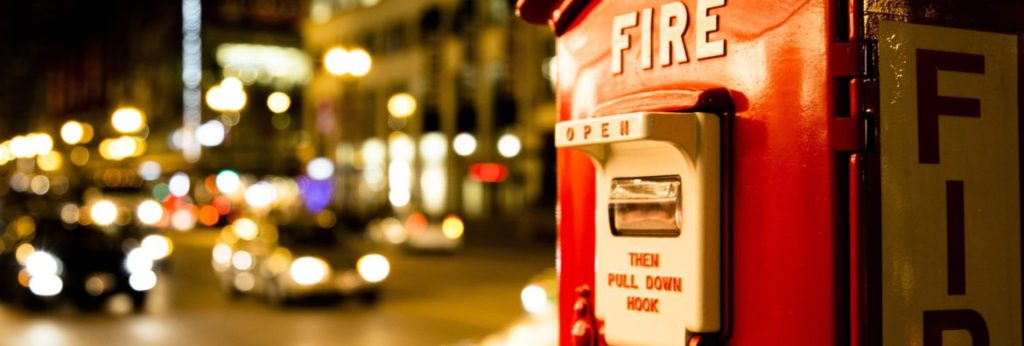In an HOA fire safety is very important as you have so many people living together. Between 2009-2013 U.S fire departments responded to an average of 14,500 structure fires per year in a high-rise building (7 stories or higher). These fires resulted in an average annual 40 civilian deaths, 520 injuries, and $154 million in property damage, per year.
The board of directors has a responsibility to its residents to reduce all fire risks as much as possible and to ensure their residents are prepared if an emergency does arise. So what should you be focusing on to be a ensure proper HOA fire safety?
Basic HOA Fire Safety
Following basic fire safety, including inspecting your HOA, have a fire safety system and fire drills is important. Learn more about HOA fire safety in this section.
1 – Inspect Your HOA
The single best thing that you can do to reduce risks of fires is to get the buildings in your condo or HOA checked at least once a year. Each local government has its own regulations on how often they require fire inspections. It depends on your buildings’ features, under some state laws buildings with fire escapes have to be checked at different times than buildings without. So make sure to read the rules in your state to make sure you’re complying with them.
Local fire departments should do conduct an inspection for free. You can also conduct inspections periodically yourself using our personalizable HOA inspection checklist.
2 – Life-safety system
A life safety system includes all equipment to detect and put out a fire. Often having smoke detectors and sprinklers is obligatory under condo associations’ rules, but not always. While the installation of the system may be pricey the potentially life-threatening risk of not having it is much higher. Make sure they’re installed in all indoor common areas. Always go above and beyond to ensure your residents’ safety. The law on smoke detectors varies from state to state, but all units should have smoke detectors in the kitchen and outside all bedrooms.
Carbon Monoxide alarms
Don’t shirk on Carbon Monoxide alarms either, you should have one of those in all common areas.In indoor public areas, each room should have a smoke detector, but it depends on the size of the area, and more may be required. Buildings should have one carbon monoxide detector on each floor. Make sure all fire safety equipment is checked regularly. Finally, the batteries in smoke & carbon monoxide detectors need to be changed once or twice a year.
These alarms make a big difference to HOA fire safety, and reduce the risk of fires in homes.
3 – Fire hazards
Your HOA or condo should consider banning or regulating common causes of fires to reduce the risk of accidental fires in your community association. You should talk to the fire marshal about what sort of things could fall into this category.
Personal grills
A few simple rules would be not allowing grills on balconies, especially in multi-occupied buildings. Also, portable fires often use alcohol gel and have been known to cause both fires and false alarms. A good rule of thumb is that anything with a flame larger than a candle shouldn’t be used on a balcony.
Amenities
If your HOA has grills that can be rented, or the clubhouse has a kitchen, there should be clear rules of use to reduce the risk of fires.
4 – Annual fire drill
An annual fire drill is essential to make sure that all residents know your HOA or condo’s fire procedures. You could tie the drill into one or more fire safety events or days. These could include how to put out different types of fires, when and how to sound the alarm and evacuate the building or unit. Be sure that residents know who to call in the event of a fire, the evacuation procedure, and where they have to go.
Training
Another good training session for managers, board members, staff and residents would be how to treat basic burns and give first aid. Everyone is more or less familiar with these things but a refresher is always extremely helpful so that people feel confident in what to do in these situations, and that they remain calm.
5 – Communicate
Use HOA communication software, like Neigbrs by Vinteum to regularly remind your residents of what to do in case of a fire. You could post videos about how to treat burns or map of the fire assembly point(s) for your HOA or condo. You can upload documents with the condo or HOA’s fire regulations, or your newsletter where you can remind residents of fire prevention tips on a regular basis.
You can add the annual fire drill to your online events calendar so everyone knows when it is. On Neigbrs by Vinteum you can also send your residents a text message or smart call telling them when you’ll be testing the fire alarms.
Conclusion: HOA Fire Safety
These are just five simple steps that your HOA or condo can take to make sure that it’s a low-risk zone for fires. Contacting your local fire department is the simplest way to guarantee that your HOA is well protected against fires and that everyone in your condo or HOA is well trained and prepared if a fire ever was to break out.
Make HOA fire safety a priority by communicating the guidelines regularly with residents. By using software and having a space online for residents and the board, you make that communication easier. Schedule a free demo of Neigbrs by Vinteum to discover how our award-winning communication software can help your HOA.






